Throwback Thursday: Seeing a black hole
If they’re so massive that not even light can escape, how can we see them?
“According to the special theory of relativity nothing can travel faster than light, so that if light cannot escape, nothing else can either. The result would be a black hole: a region of space-time from which it is not possible to escape to infinity.” –Stephen Hawking
You may have encountered objects that are the same size as one another, but have very different masses.

Even with the same volume — and even with the same number of atoms — this is possible because the objects can be made out of different elements. The higher you go in the periodic table, the larger and more massive your individual atoms are, and so typically, neglecting differences in the sizes of the electron shells, the heavier each individual atom is, the more dense a material is.
But we can do better, in terms of density, than just increasing the mass of our atomic nucleus.
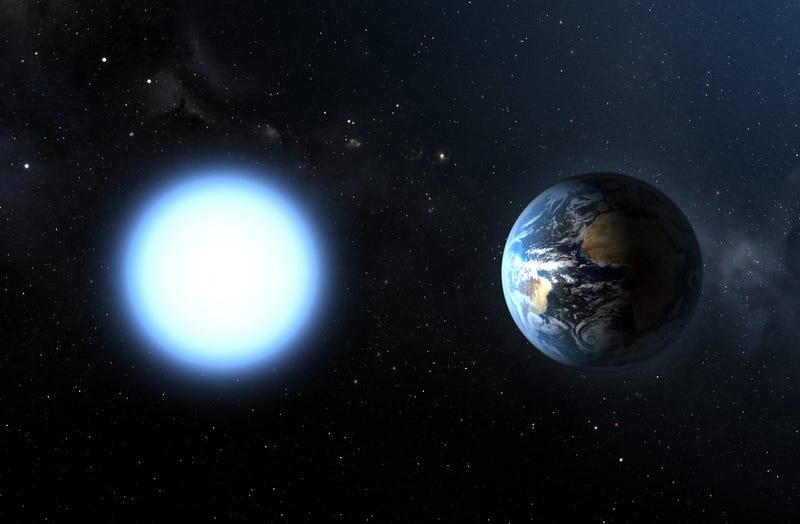
Gravity is — on the largest scales — the most powerful and irresistible of all the forces. If it weren’t for the intense conversion of matter-into-energy going on in the core of the Sun, our star — a full 300,000 times as massive as Earth — would contract down to be no bigger than our own planet. No bigger in terms of size, that is, but it would be thousands of times more dense than even the densest element on our planet.
That’s because gravity can compress the very atoms themselves, and it would only be the quantum pressure of the Pauli exclusion principle that kept this hypothetical white dwarf from collapsing farther. If there were enough mass to force the electrons into the nuclei themselves, we could fuse all the protons and electrons into neutrons, creating an even denser form of matter known as a neutron star.
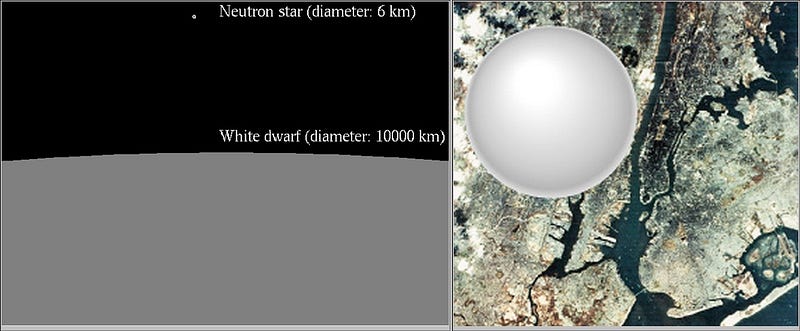
Whereas a white dwarf might be an object the mass of our Sun compressed into the size of the Earth, a neutron star is that same solar mass compressed into a size smaller than New York City! It might be surprising, but an object as massive and dense as a neutron star would be extraordinarily difficult to leave. Here on the surface of Earth, you need to reach a speed of about 25,000 miles-per-hour (or about 11.2 km/sec) to escape from Earth’s gravitational pull, but at the surface of a neutron star you’d need to move at around 200,000 km/sec, or more than half the speed of light!
In fact, if you just piled more and more mass atop that neutron star, the individual neutrons would eventually collapse, and not even light would be able to escape. As Hawking (and many others before him, going all the way back to John Michell in the 18th Century) have noted, this would create a black hole in space, where matter (and other forms of energy) could fall in, but nothing — no matter, no light, no nothing — could get out.
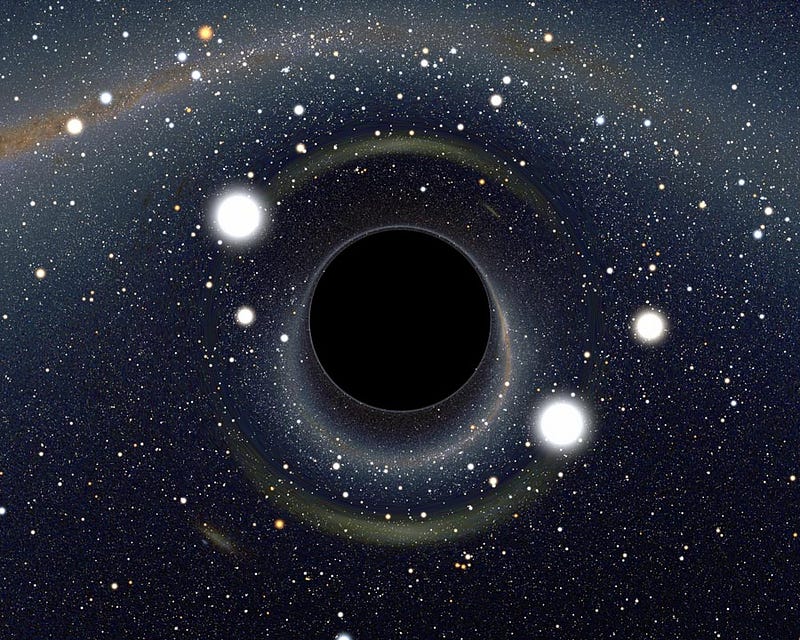
But if nothing can escape from black holes, not even light, then how do we detect them?
The simple answer is: from their gravity.
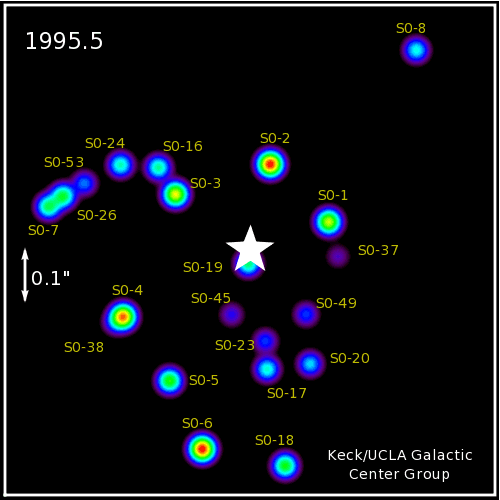
By observing how individual stars orbit a point mass that gives off no light, we can infer that — at the center of our galaxy — there’s a point mass many millions of times the mass of our star. It emits no light and has no emission signatures of any type.
But this is not the only black hole we know of. We know about the central black holes of many hundreds of galaxies, all of which are too far away to measure individual stars moving in orbit around them. So how do we know they’re there?
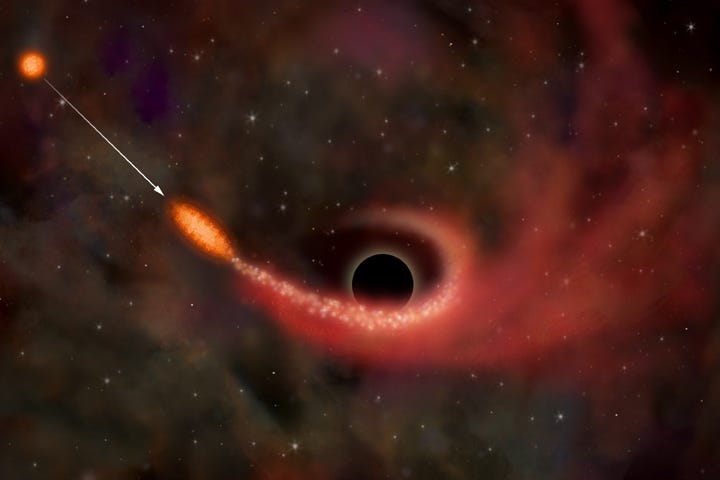
Because black holes exert intense gravitational forces, they can tear matter apart that passes too close. This includes gas clouds, asteroids, planets and even entire stars, as shown above!
Black holes, like neutron stars, white dwarfs and normal stars, also have strong magnetic fields that get even stronger the closer you get to the event horizon, or the point from which light cannot escape. As matter — which is made of charged particles like protons and electrons, remember — moves through this magnetic field, it accelerates, emitting radiation of progressively higher and higher energies the stronger the field gets.
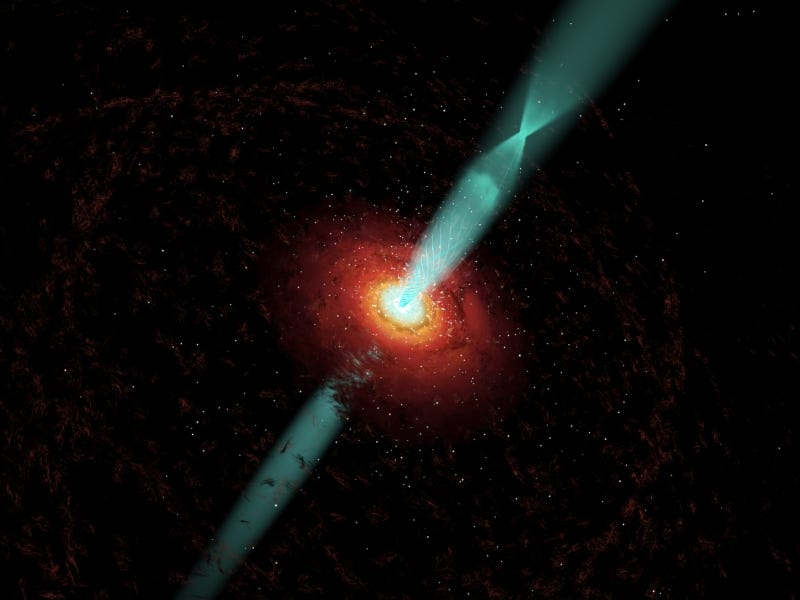
So what we can do is look for X-ray emissions from the centers of galaxies, and the accompanying presence of bipolar jets, like those coming from Centaurus A.
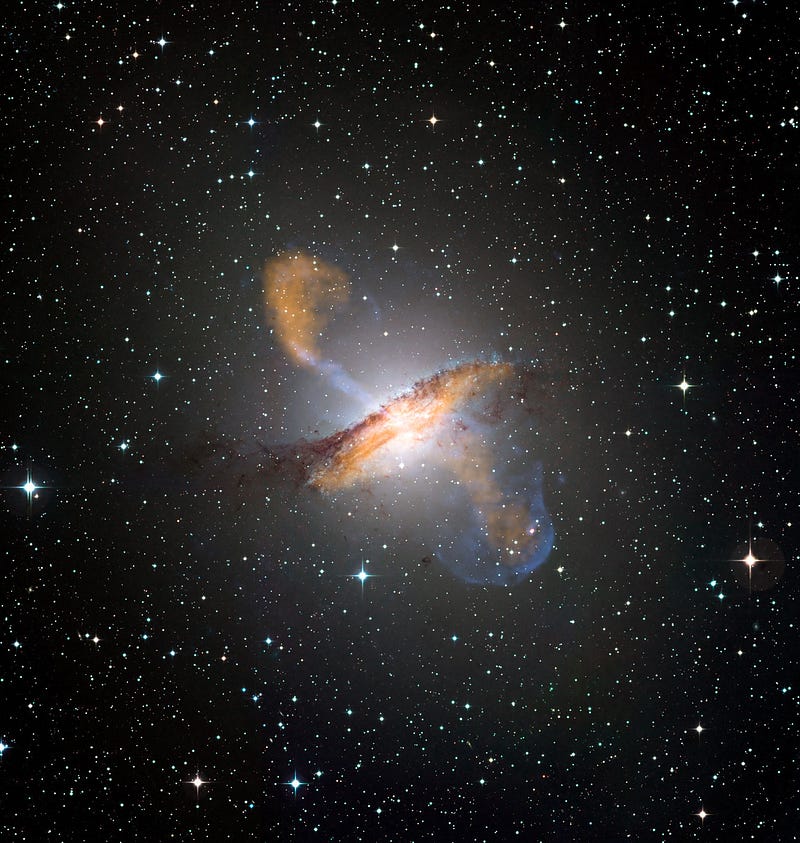
These jets are evidence for a supermassive black hole that’s actually active, or presently feasting on some type of unsuspecting matter from within its own galaxy!

The giant elliptical galaxy above, Messier 60, has a multi-billion mass black hole at its center, which we can tell thanks to its X-ray emissions. How can we tell its mass? Because there’s a relationship between the X-rays emitted and the mass of the black hole accelerating the matter!
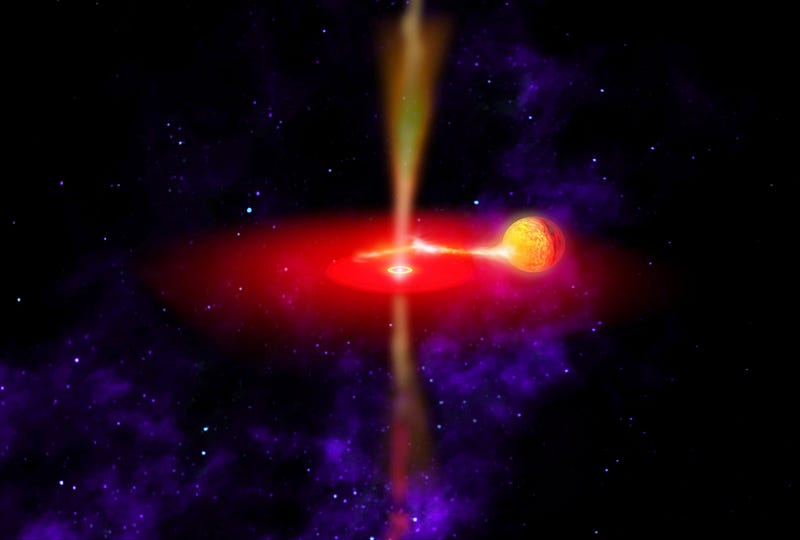
While it’s true that not every black hole is active, every black hole that exists in the vicinity of other matter (which is practically all of them) is thought to have an accretion disk. If we could get close enough to that disk to see it, we’d find that as the matter in it accelerates at higher and higher velocities, it emits progressively more-and-more energetic light.
In other words, the outermost portions of the accretion disk would be invisible, but as you moved inwards, even though the black hole itself wasn’t emitting any light, you’d see the accretion disk begin to glow a dim red at some finite radius, and intensify to orange, yellow, white, and eventually blue and violet as you moved inwards towards the event horizon!
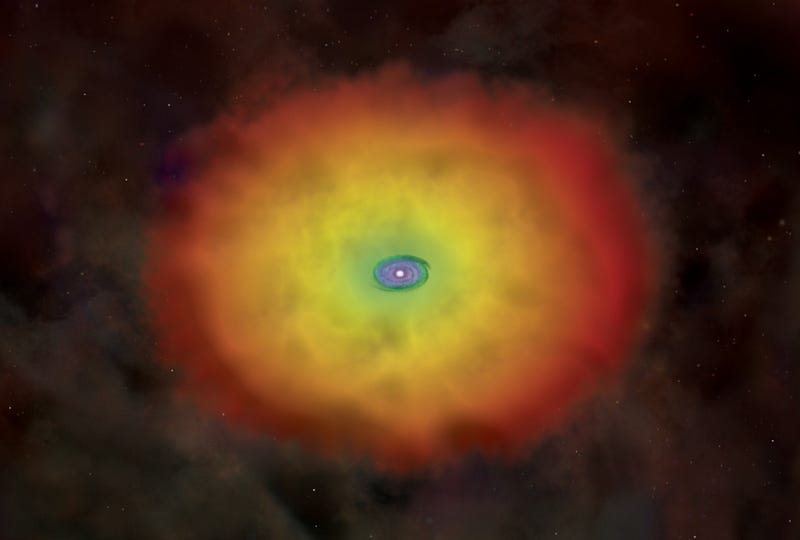
If you could see into the ultraviolet or X-ray, those would intensify very close to the event horizon itself, and so even a black hole that wasn’t in the process of devouring anything would still be visible thanks to this disk! As our resolution improves in these extremely high energies, smaller and more distant black holes should become directly visible to astronomers.
But what if you had a black hole that wasn’t eating anything, with no accretion disk, and in total isolation from anything and everything else in the Universe? Could you ever “see” it then?
The answer, believe it or not, is yes. You’d just need the right kind of eyes.
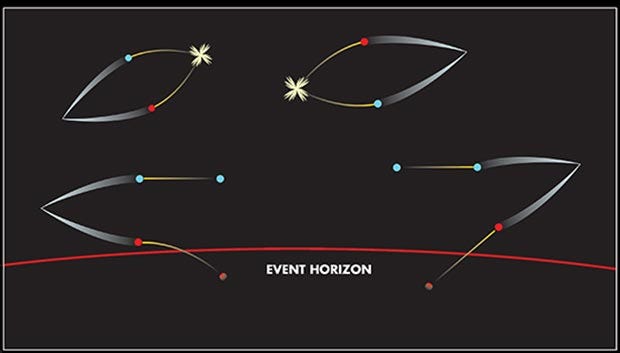
The quantum vacuum is constantly creating particle-antiparticle pairs, that are winking in-and-out of existence. This includes pairs of photons, which we normally gloss over. But when this happens at the edge of a black hole, sometimes one of those virtual particles gets sucked in to the black hole, while the other escapes.
When this happens, the particle that escapes — whether it’s matter, antimatter, or a photon — has real, positive energy, and the black hole loses a corresponding amount of mass to make up for it. This type of radiation is known as Hawking radiation, and is (IMO) Stephen Hawking’s greatest contribution to science, that he determined the existence, magnitude, and energy spectrum of this radiation.
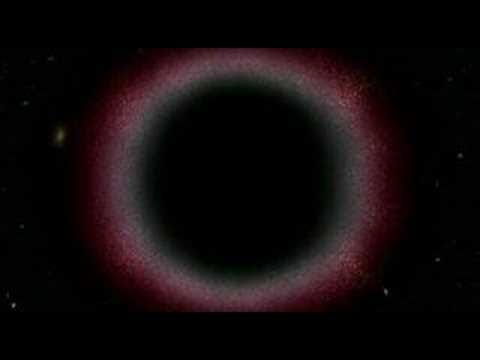
This radiation is maddeningly cold; the black hole at the center of our Milky Way would emit Hawking radiation of a temperature measured in the femtoKelvin range, or a few times 10^(–15) Kelvin. But as a black hole evaporates and loses mass, that temperature increases. It may take a googol years or so for a black hole to evaporate completely, but when it does you get a brilliant flash of energy that’s as powerful as any nuclear explosion here on Earth!
And that’s how we can see black holes: practically through their gravity and their X-rays, and in theory through light from all parts of the spectrum from their accretion disks and super-low-energy light from Hawking radiation. Maybe someday, we’ll even be sophisticated enough to detect it. In the meantime, know that despite their name, a black hole isn’t so black after all!
Leave your comments at the Starts With A Bang forum on Scienceblogs!





